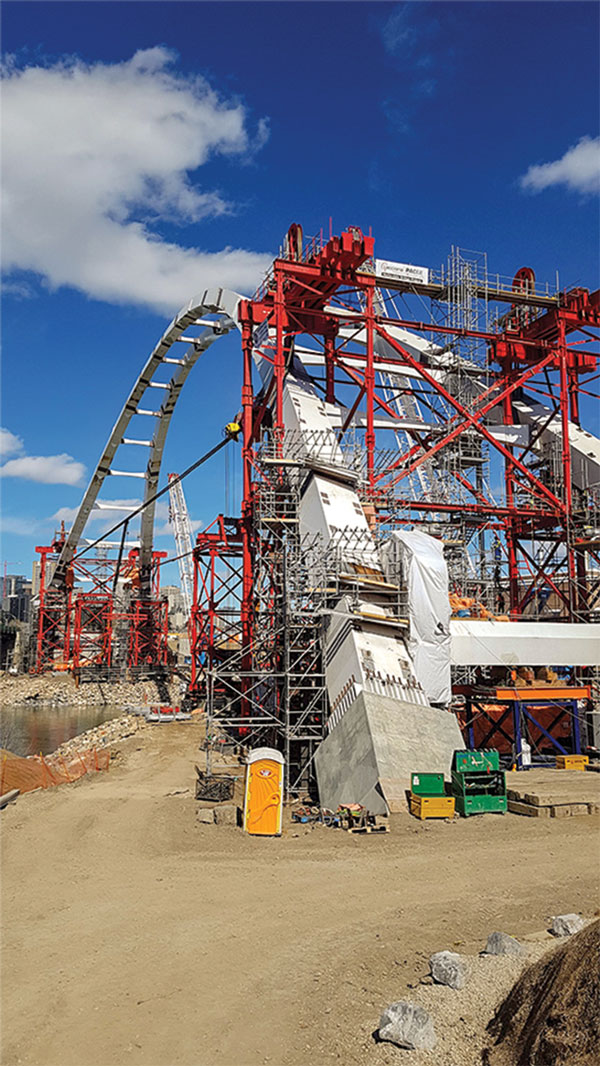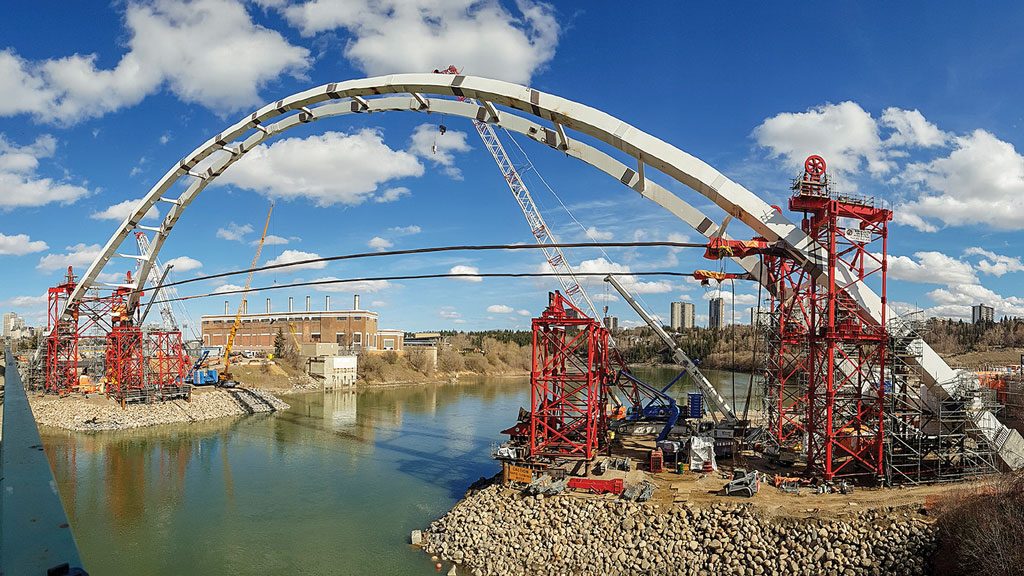Edmonton’s iconic $155-million Walterdale Bridge remains mired in controversy with the city refusing to say how much, if any, it will collect of the $11 million in late payment fees specified in the contract.
Mayor Don Iveson and 12 councillors all initially refused to respond or comment on how much was paid.
As a result, the Journal of Commerce (JOC) filed a Freedom of Information request with the city to reveal the true payment and how much the city may have written off when it blinked during post project negotiations.
The official response from the city’s communications department was: “The contractor has paid damages resulting from the opening delays of the Walterdale Bridge. The Walterdale Bridge project has come in under budget and has become the landmark for Edmonton that we intended it to be. As your request for information pertains to contractual matters, we are not in a position to provide further details.”
After the JOC collaborated with the Edmonton Journal, the mayor made a 180-degree turn, saying that, in fact, negotiations over the liquidated damages were still ongoing.
“There were a number of negotiations at the end to finalize the terms of the contract to get certain things done by certain a time. As to the specifics of who paid, that I don’t have off the top of my head,” Iveson told reporters. “When the project is finally closed and all the build is finally done…they are still working on the landscaping and trail work…when it is complete — and it may also be past the warranty period — then the final costs for all projects will be disclosed once all the bills are in and any disputes are settled.”
He says they have to wait for the final paperwork and contractual issue enforcement for the warranty period to pass.
“You don’t know what your house is going to cost until all the trades are off your site and the warranty time has passed,” he says.
The steel bridge over the North Saskatchewan River was supposed to be a jewel in Edmonton’s renaissance, a transition from the much-mocked “Deadmonton” to a hip and vibrant urban centre.

It opened in September 2017, some 27 months later than scheduled and the fallout over the delays continues with another $16 million lawsuit between a steel fabricator and Acciona-Pacer Joint Venture (APJV), the general contractor, still winding its way through the courts.
The project has been controversial from the beginning. Originally priced at $132 million, APJV was the lowest bidder at $155 million.
The city agreed but APJV was ostensibly on the hook for late fee penalties which started at $10,000 a day, rising for $17,000 a day on Oct. 15, 2016. When the bridge opened, those penalties would have accrued to approximately $10.6 million.
That’s where the discussions would have started to apportion blame, says procurement expert and JOC columnist Stephen Bauld, of PCI.
“They’re not just going to write a cheque,” he says, with both sides normally sitting down to talk about what caused the delays, what was out of the hands of the contractor and what delays the city itself may have caused.
Bauld says whatever amount was paid should be public knowledge because it signals the city’s resolve to either collect what is fully due or that the city is more likely to blink in future post-project negotiations.
“It must be fair, open and transparent,” he says. “Those are the key words. The public has a right to know that the city got fair value from the contract.”
Beyond the contractual obligations between APJV and Edmonton, there is also the question of how the money — if any — has been accounted for as revenue and where and how it is likely to be spent.
Alberta’s laws state it cannot be simply folded into a slush fund or a discretionary spending fund with no accountability.
Bauld says the Burlington Brant Street Pier involved similar issues when it opened eight years late and at a cost of $14.4 million. In that case, after some initial secrecy during negotiations with contractors, Burlington accepted a $2 million settlement which it made public.
Construction lawyer Rob Kennaley, of Kennaley Construction Law, says it can get complicated in discerning late charges because it’s not all cut and dried.
“First, they’re not penalties, they’re referred to as liquidated damages,” he says, not commenting directly on the Walterdale Bridge dispute. “The parties agree at the outset of the contract what is reasonable in terms of damages for being late in completion. It has to be reasonable, so a $100,000 contract can’t demand $75,000 in damages, for example.”
The real horse trading comes when the parties sit down at the closing of the contract and argue about who is owed what.
“The owner may have changed the work and added costs and time delays, there may have been a stroke or a force majeure which caused the delays.”
Each then tallies up what they are owed above and beyond the original contract price. The idea is to prevent the dispute going on to court, he says.
Many of the delays on the Walterdale Bridge were a result of its showcase design and in sourcing decisions.
The steel was 16 months late from being fabricated in sections in South Korea and had to be field fitted because the sections were incorrect. Water levels in the North Saskatchewan River created issues with the barges floating materials to the site and there were delays getting down 20 metres to create the supporting piers.
APJV shrugged off criticisms of using a fabricator on the other side of the globe and all the inherent delays it caused.
Spain-based Acciona’s 2017 annual report shows robust revenues of €7.2 billion giving a profit of €220 million, down 37.5 per cent from its seven lines of business including energy and construction. It has operated in Canada for 15 years and completed 10 major infrastructure projects such as the Lionsgate Bridge and western pipelines.
As such, the fine is insignificant for Acciona even if it does lose money on the bridge contract overall. Despite their standing as a publicly traded company with a duty to report to shareholders any material information affecting their revenue or outlook, Accionia doesn’t appear to have done that and merely echoed Edmonton’s statement.
Still pending are countervailing lawsuits between Capitol Steel of Manitoba and APJV. Capitol was the structural steel site assembly subcontractor to be paid $11.9 million on a time and materials basis for all work it directed Capitol Steel to perform outside the original scope.
Capitol Steel alleges in its statement of claim that incorrectly sized and coated arch modules were shipped to Canada from South Korea and that APJV demanded subsequent welding repairs which Capitol Steel considered to be of a lesser quality than accepted Canadian standards. It also accuses APJV of holding its equipment hostage and non-payment for work already done.









Recent Comments
comments for this post are closed